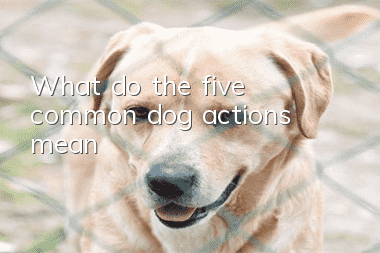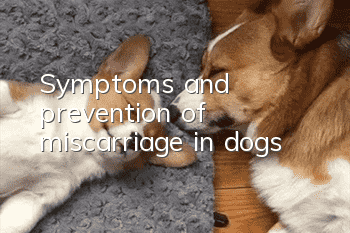What should I do if my dog twitches?

Solutions to dog convulsions
1. Place the dog in a safe and comfortable place, and keep it cool and quiet.
2. Cover with a blanket and avoid touching the floor, walls and other hard objects until the attack subsides to prevent trauma.
3. When a dog becomes stiff, the mucus in the mouth and nose should be removed promptly during the gap period to keep breathing smooth. Remove feces and urine at the same time.
4. Give drinking water, but reduce the amount of food, and let the sick dog rest in a quiet environment. And seek medical treatment as soon as possible.
Causes of convulsions in dogs
1. Heat stroke. It is common when dogs are active under strong sunlight, such as walking, training, and playing; dogs are kept in closed indoors, in dog cages, or in cars for too long, resulting in heat stroke due to excessive temperature, poor ventilation, and lack of drinking water; body shape Dogs that are obese, have heart disease, have thick coats, and lack exercise are also prone to heatstroke.
2. Poisoning. Such as rat poison poisoning and pesticide poisoning.
3. Hypoglycemia in dogs. This condition mainly occurs in puppies and female dogs. Transient hypoglycemia (temporary low blood sugar) is more common in puppies before 3 months old, mostly caused by cold, hunger or gastrointestinal disorders. The puppy showed depression, unsteady gait, facial muscle twitching, body spasms, and soon fell into a coma. Female dogs often get sick due to having too many litters, resulting in increased nutritional needs and large amounts of lactation after delivery. The disease manifests as muscle spasms, rigid gait, general tonic or intermittent spasms, body temperature rising to 41 to 42 degrees, and breathing problems. ,Rapid heartbeat.
4. Canine distemper. This is a common infectious disease in dogs.
5. Postpartum cramps. It mostly occurs in small dogs, with poodles being the most affected. The incidence is particularly high in the first and second litters, and the litter size is more than 4. Dogs with high lactation volume are mostly dogs. The incidence rate is in excitable small female dogs. The highest, accounting for more than 90% of the total number of cases. Those with a litter size of less than 3 are less likely to develop the disease.
6. Encephalitis and meningitis. Inflammation of the meninges and brain parenchyma is caused by infection or toxic factors, including various brain infections and encephalopathy.
- What's the golden retriever's personality like? Six common living habits of golden retrievers
- Appearance characteristics of pet dog Shetland
- Schnauzer’s personality after neutering
- What does a dog see in the world?
- There are two red pimples on the dog’s eyebrows
- What is the cause of blood in the urine of dogs? What medicine should I take?
- How much chocolate can kill a dog if he eats it?
- What should I do if my dog’s nails are cut to the bleeding line?
- Dog becomes dumb after neutering surgery
- Why can’t dogs drink mineral water?



